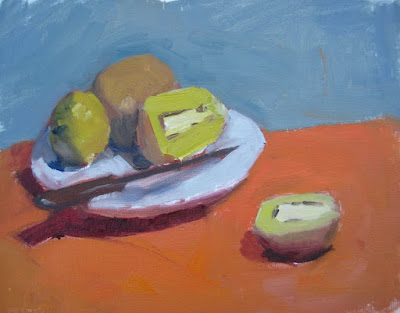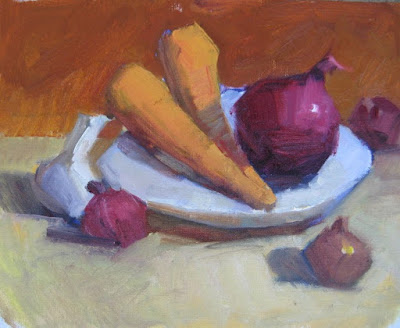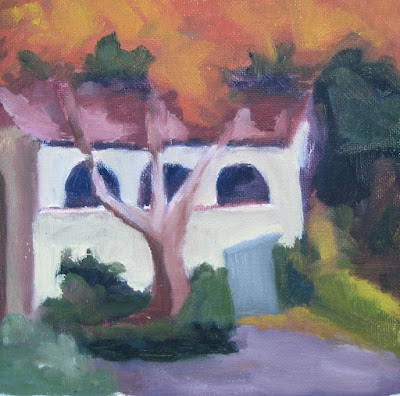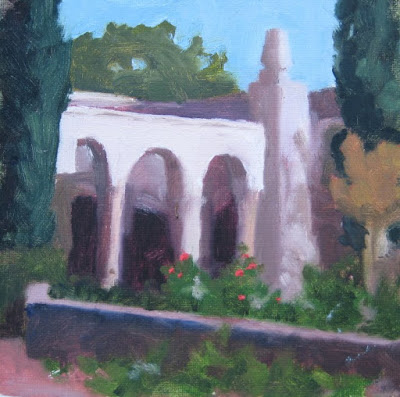
Design and composition are most important. It doesn't matter what the painting is. It may be an abstract, and the same principles will apply.
A triangle is a good design - if lines and shapes in the painting make a triangle, it will help it be a good design.
There should not be big solid unvaried shapes, unless you want them to be the most important thing in the painting.
Shapes can be broken by variations in value and temperature as well as lines.

The painter should relocate elements to improve the design.
Know why you place elements where you place them and what affect it has on the composition.
Patterns of dark and light are important because they are most visible. Squint your eyes and lay them in first.
Artists draw shapes with straight lines because it helps to give them direction and locate the planes for light and shadow areas and highlights.

Contrasts are important - light & dark, warm & cool, large & small, horizontal & vertical.
Things in the painting should not be equal.
It doesn't matter what your subject is. What you paint won't always interest you; it is your job to make it interesting.
You should know what the most important thing in your painting is. It might be an object or a group of objects or a shadow or the foreground. It is what you want the viewer to look at. It is the story that your painting is about.
Colors have the most intensity when you look directly into them. If they are in the periphery of your view, they will seem less intense. The important thing in the painting should have the most intense color.

You are limited by the paint on your palette. You can't paint anything lighter than white or more intense than your pure color.
Start finding your colors with the most intense color; everything else will key off of that.
It is the relationship between the colors rather than the individual colors that you are painting. Look at the interplay between your colors, even as you mix them on the palette; try them next to each other.
Test the background color in different parts of the painting. It should make objects appear to come forward. The background and background objects define the edges of the objects in front.
It is oil paint. You can cover anything.
What a great summation of an oil painting class. As I've never taken a painting class of any kind, these tips are great! Your oils have great color, lines, and potential. Thanks for taking the time to share these tips with us.
ReplyDeleteWatercolor not so forgiving. But acrylics are and that is one reason I love them! Thanks for the information! And I really love the last one. And the second.
ReplyDeleteReally enjoyed your noted on your class! Some very nice paintings here!
ReplyDeleteThanks for sharing those helpful notes Barbara, you have quite a lovely collection of still life here.
ReplyDeletewhat a realistic art ... i really want to learn how to paint by using through imagination so cool .. am i right?? San Diego Social Media
ReplyDelete